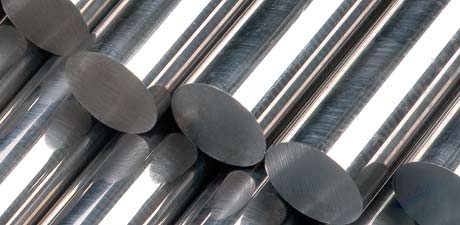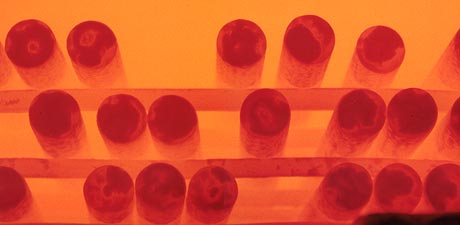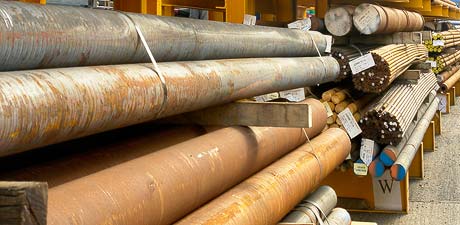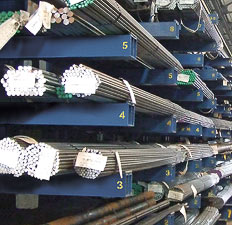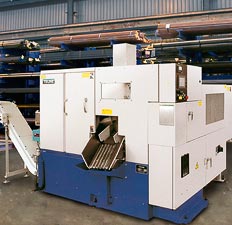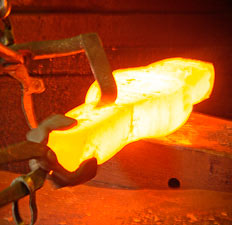Technical Data
Metallurgical Terms
Flow Lines (Fibre).
(a) The appearance revealed by etching hot-worked steel and caused by local differences in composition, and inclusions, drawn out in the direction of working. Flow lines are significant since the fibre habit results in directional properties.
(b) Striations visible on etching cold worked steel. They are caused by local electrolytic differences of potential produced by the varying degrees of local distortion, and indicate the principal directions in which movement of the metal has taken place.
Forging.
(a) Working metal parts to a finished shape by means of hammering or pressing after the material has been rendered plastic by heating to a high temperature. Forging may be by hammer forging, press forging and drop forging or stamping. Hammer forging is carried out by steam or pneumatic hammers and deformation is brought about by a number of sharp successive blows of short duration. Press forging is done by hydraulic presses and the deforming pressure is applied for longer periods.
(b) The product of the forging operation. (See also Drop Forging).
Fracture.
The type of surface found on breaking a piece of steel. A nomenclature has been adopted to describe certain types. Crystalline is bright and glittering, failure having developed along the cleavage planes of the individual crystals. Such a fracture is typical for a brittle material. In fibrous or woody fracture, the appearance is due to the elongation of the individual grains and this may be accentuated by the presence of slag or by a banded structure; it is grey and dull in appearance and is characteristic of a ductile but non-homogeneous material such as wrought iron. A silky fracture has a very smooth, fine, dull grain and usually occurs in a highly ductile material such as mild steel. A vitrious fracture characterises a fine grained non-ductile material. A tough fracture refers to a ductile material where failure occurs only after considerable deformation, whilst in a brittle fracture metal fails by cleavage with little or no plastic deformation.
Fracture Toughness.
The ability of a material containing a defect to withstand stress without fracture. The limiting value known as plane strain fracture toughness is a measure of the resistance of material containing a crack of specified dimensions to withstand a given set of loading conditions without fracturing in a brittle manner.
Free Cutting Steels.
Steels to which special additions have been made to promote machinability. Sulphur, lead or selenium are added for this purpose.
Fretting.
This takes place when two solids pressed together repeatedly move a very small amount in relation to one another. Very small particles of the solids become detached and form debris which is frequently in the form of an oxide. The resulting damage is sometimes called fretting corrosion. Fretting often initiates fatigue failure.
Full Annealing.
A softening process in which the steel is heated to and held for a suitable length of time at a temperature, which for hypo-eutectoid steel is above the transformation range, and for hyper-eutectoid steel within the transformation range, followed by slow cooling to 600°C or below.
- < Previous
- 1
- 2
- 3


